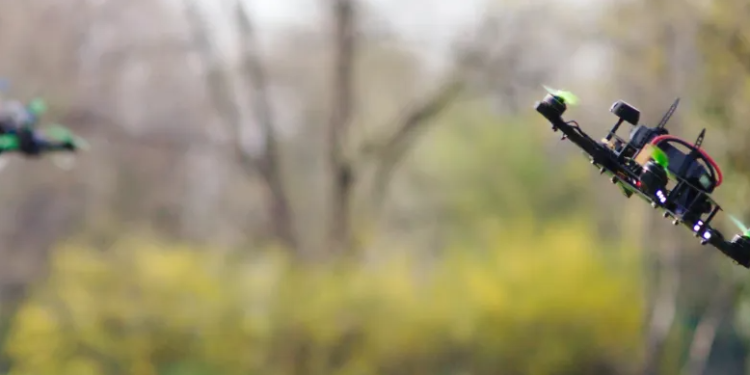Selecting the right racing drone frame is crucial for maximizing performance in the high-speed world of drone racing. The frame serves as the foundation of any racing drone, directly impacting its agility, stability, and ability to withstand the intense forces of competitive flying. A well-engineered frame can provide a significant advantage, ensuring that the drone stays responsive and durable during demanding races.
Finding the perfect balance between weight and strength is key. A lighter frame enhances speed and maneuverability, but it must also be robust enough to handle the wear and tear of high-impact racing environments. For pilots seeking to elevate their drone racing experience, explore a selection of high-performance racing drone frames that combine cutting-edge design and durability, like those offered by Mepsking, tailored to meet the exacting standards of competitive pilots.
The Evolution of Racing Drone Frames
Over the years, racing drone frames have evolved significantly in terms of design, materials, and performance. Early racing drones often featured simple, bulky frames that were prone to damage and offered limited customization. However, with the rise of drone racing as a competitive sport, manufacturers began to focus on creating lighter, more durable, and aerodynamically optimized frames to enhance performance.
In the early 2010s, the use of carbon fiber revolutionized drone frame construction. This lightweight yet strong material allowed for faster, more agile drones, giving pilots a competitive edge. The introduction of advanced frame designs, such as the H-shape and X-shape layouts, further improved flight stability and control, especially during high-speed maneuvers.
As technology advanced, frames became more customizable, with options for different motor sizes, camera mounts, and flight controller compatibility. Modern racing drone racks are designed with a low center of gravity, reinforced parts, and modular components that allow pilots to fine-tune the drone for optimal performance.The evolution of racing drone frames continues to push the boundaries of what’s possible in drone racing, providing pilots with the tools they need to compete at the highest levels.
Understanding the Role of a Racing Drone Frame
A racing drone frame is the structural foundation that supports all the essential components of a racing drone, including the motors, flight controller, battery, and camera. It is designed to withstand the high speeds, sharp turns, and intense impacts that are common in drone racing. The frame provides stability and protection for the internal components while ensuring the drone maintains agility and precision during flight.
In drone racing, where every millisecond counts, the frame plays a critical role in a drone’s performance. It influences the overall weight, aerodynamics, and durability of the drone. Lighter frames improve speed and maneuverability, allowing pilots to make quick adjustments, while strong materials, such as carbon fiber, ensure the frame can endure the stresses of high-speed racing and crashes. The shape and design of the frame, whether it’s an X-frame, H-frame, or stretch X-frame, also affect the drone’s flight characteristics, such as stability and handling.
In short, a racing drone frame is more than just a protective shell; it directly impacts a drone’s efficiency, handling, and overall success in the competitive racing environment.
Materials and Designs: Choosing the Right Frame for Performance
When choosing a racing drone frame, it’s essential to consider both the material and design, as these factors directly influence the drone’s performance, speed, and durability.
Frame Materials
The most common materials used in racing drone frames are carbon fiber, plastic, and aluminum. Carbon fiber is the preferred choice due to its lightweight nature and high strength-to-weight ratio, offering excellent durability while keeping the drone’s weight low. This allows for faster speeds and better maneuverability. Plastic frames, on the other hand, are more affordable and lightweight but may not provide the same level of durability and impact resistance. Aluminum frames offer strength and durability but are typically heavier than carbon fiber, which can affect speed and agility.
Frame Designs
There are several popular frame designs in the racing drone world, including X-frame, H-frame, and stretch X-frame. The X-frame is the most common design and provides excellent stability and agility, making it ideal for tight racing circuits. The H-frame offers a more stable and durable structure, though it may be slightly less agile. Stretch X-frames, with a longer body, are designed for better straight-line speed and high-speed stability, making them ideal for larger tracks.
Each design and material choice impacts the drone’s overall performance, including its weight, aerodynamics, durability, and handling characteristics during high-speed racing.
Key Factors in Choosing a Racing Drone Frame
Choosing the right racing drone frame involves considering several key factors to ensure top performance. These include durability, weight-to-strength ratio, and flight efficiency.
Durability
A durable frame is essential for withstanding high-speed impacts and crashes. For instance, the iFlight Nazgul Evoque F5 V2 frame is crafted from high-quality carbon fiber and features a design that protects vital components from dust and moisture, ensuring long-lasting reliability during competitive races or freestyle flying.
Weight-to-Strength Ratio
The frame’s weight significantly impacts speed and maneuverability. The Mak4 Freestyle Frame strikes an excellent balance between lightweight design and strength, with reinforced aluminum tubes offering durability while minimizing weight for optimal performance in high-speed conditions.
Flight Efficiency
Efficient flight is crucial for precise control, especially during sharp turns and aggressive maneuvers. The iFlight Nazgul XL5 frame features a 5mm arm design, ensuring a lightweight structure that can withstand the stresses of freestyle flying in larger spaces while maintaining superb flight efficiency.
Considering these factors—durability, weight, and flight efficiency—will help you choose the best frame for your racing or freestyle needs. All these frames, including the Mak4 Freestyle, iFlight Nazgul Evoque F5 V2, and iFlight Nazgul XL5, are available for purchase at Mepsking’s online store.
Essential Maintenance Tips for Racing Drone Frame
Maintaining and optimizing your racing drone frame is crucial to ensure its longevity and performance. Regular cleaning is essential to remove dirt, dust, and moisture that can affect the frame and components. After every flight, especially in harsh conditions, wipe down the frame and check for any signs of damage, such as cracks or loose screws. It’s also important to inspect the frame’s arms and joints for wear, as these areas are most susceptible to stress. Periodically replace any worn-out parts, like TPU guards or mounting holes, to keep the frame in top condition. Additionally, regularly tightening screws and checking motor mounts can prevent any loose components that may affect flight stability. By following these maintenance tips, you can maximize the lifespan and performance of your racing drone frame.
Conclusion: Choosing the Right Racing Drone Frame
In conclusion, choosing the right racing drone frame is crucial for maximizing performance, durability, and flight efficiency. Whether you prioritize lightweight design, strength, or stability, the frame you select plays a key role in your drone’s overall capabilities. By considering factors such as material, weight, and design, you can ensure your drone performs at its best. To explore a variety of high-performance racing drone frames, visit Mepsking’s online store for top-quality options that meet all your racing needs. Plus, enjoy up to 50% off on selected frames!











































































